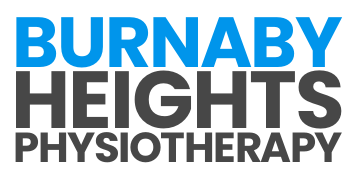Overcome Pain: Your Guide to Pelvic Floor Physiotherapy
October 27, 2025Pelvic Floor Physiotherapy for Pregnancy: A Game Changer
October 27, 2025If you’re looking for ways to address pelvic organ prolapse, pelvic floor physiotherapy for prolapse can help you restore pelvic support, reduce discomfort, and regain confidence in your daily activities. By strengthening and coordinating the muscles that support your organs, you’ll set the stage for lasting pelvic health. Below are five clear steps to guide you forward.
1. Understanding Pelvic Organ Prolapse
Pelvic organ prolapse happens when one or more of the pelvic organs shift from their normal position and press downward. This usually results from weakened pelvic muscles that lose the strength and flexibility to hold everything in place. Symptoms may include pressure in your pelvic area, difficulty controlling bladder or bowel movements, and a persistent heaviness.
Factors such as childbirth, repetitive heavy lifting, chronic coughing, or even hormonal changes can increase your risk of experiencing prolapse. While it can feel overwhelming, recognizing these contributing factors sets you on the path to effective management.
2. Why Pelvic Floor Physiotherapy Matters
Pelvic floor physiotherapy focuses specifically on the muscles and connective tissues that help support your bladder, uterus, and rectum. Through targeted exercises and techniques, you can:
- Improve muscle tone and flexibility
- Enhance your overall pelvic stability
- Reduce common prolapse symptoms, like discomfort and incontinence
If you’re also dealing with related concerns, such as bowel irregularities, explore pelvic floor physiotherapy for constipation for additional relief and support.
3. Core Techniques
Pelvic floor physiotherapy typically blends a variety of approaches designed to suit your specific needs. You might encounter:
-
Kegel Exercises
These involve intentionally contracting and relaxing your pelvic floor muscles to promote strength and coordination. -
Breathing and Alignment
Proper breathing patterns can boost muscle synergy. Coordinating breath with gentle abdominal engagement often eases pressure on your pelvic organs. -
Manual Therapy
Hands-on techniques, when necessary, may help release tension or address muscle imbalances that contribute to prolapse discomfort. -
Biofeedback
This uses sensors that monitor muscle activity, giving you real-time feedback to improve your technique and track progress.
4. Practical Tips For Success
While specialized exercises are central to pelvic floor physiotherapy for prolapse, everyday choices also make a difference:
-
Mind Your Posture
Standing or sitting tall helps reduce extra strain on your pelvis. Notice if you hunch your shoulders or arch your lower back, and adjust to relieve pressure. -
Stay Active
Low-impact activities like swimming or walking can support circulation and fitness while avoiding too much stress on your core. -
Manage Your Weight
Maintaining a healthy weight can minimize abdominal pressure. Excess weight often puts added strain on the pelvic organs. -
Check In Regularly
Pay attention to how your body feels throughout the day. A quick posture reset or muscle-tightening break can keep you on track.
5. When To Seek Professional Support
If you have persistent symptoms, including urinary leaks or pain, a licensed pelvic floor physiotherapist can guide you toward the most effective exercises and monitor your form. Many individuals also benefit from exploring related treatments, such as pelvic floor physiotherapy postpartum if you’ve recently given birth, or pelvic floor physiotherapy for incontinence if leaks are your main concern.
Quick Recap and Next Step
- Know what prolapse is and identify early signs.
- Use pelvic floor physiotherapy techniques to improve support.
- Focus on posture, light exercise, and healthy habits.
- Seek professional help when symptoms persist.
Take one step at a time to strengthen your pelvic floor. With the right guidance and consistent effort, you’ll find relief from prolapse symptoms and feel more confident moving through every aspect of your life.


